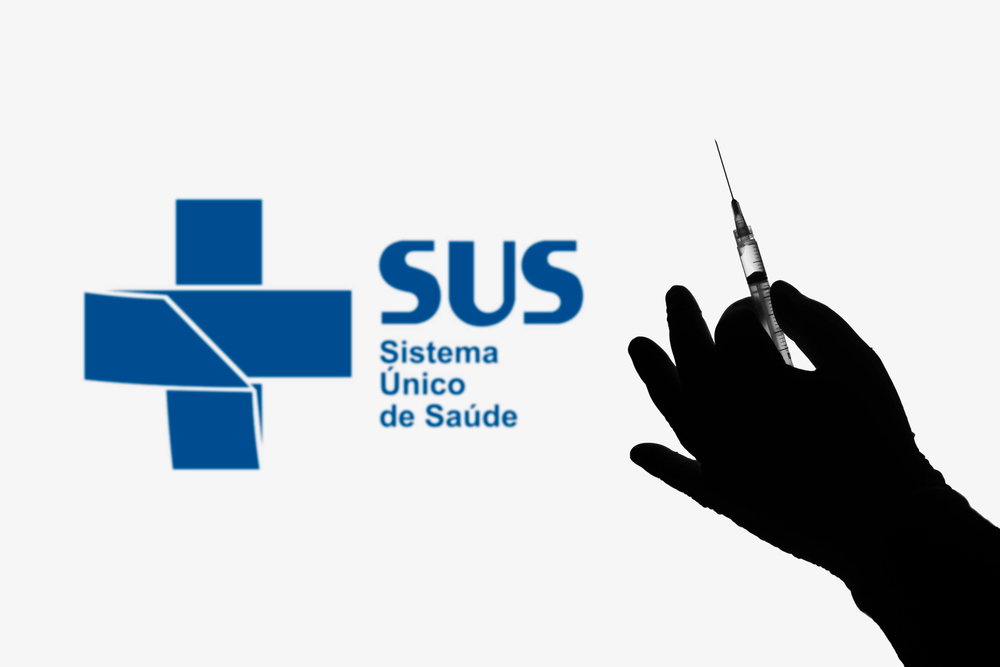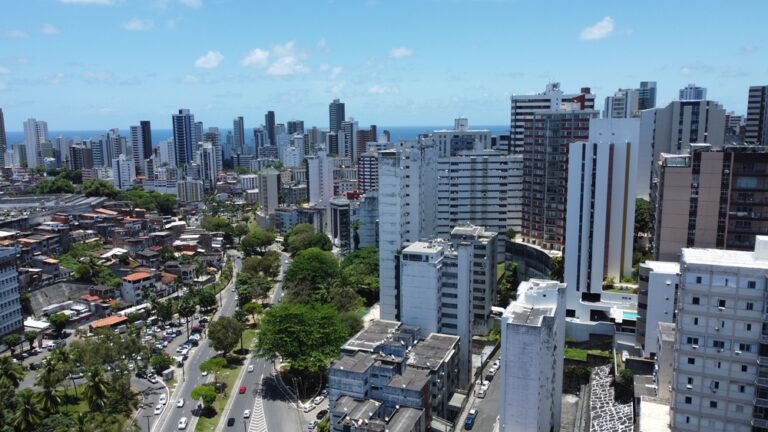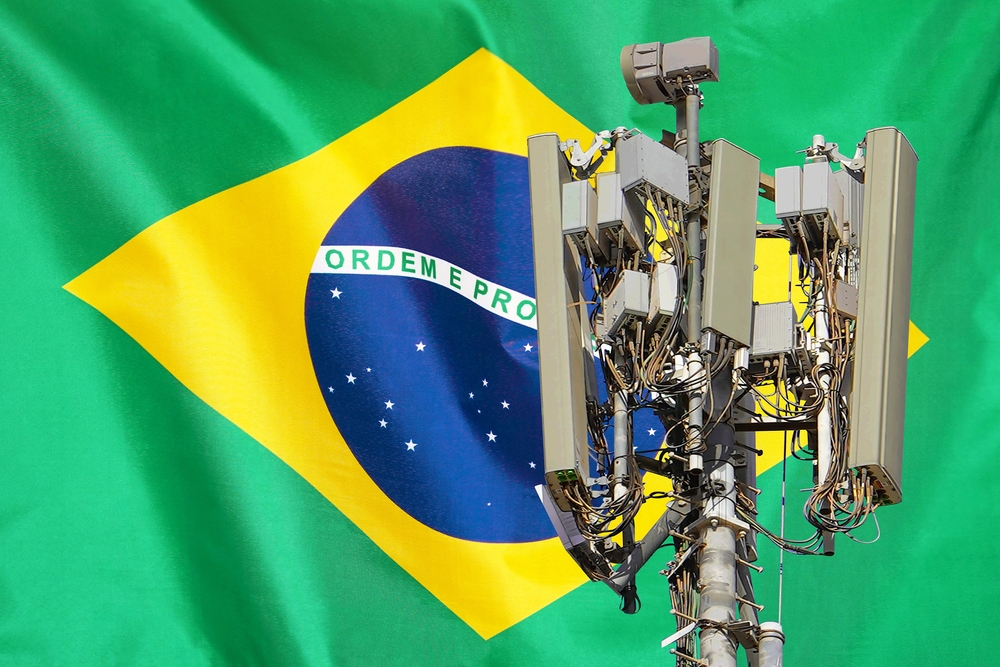Table of Content
ToggleIntroduction
Brazil’s healthcare system, known as the Sistema Único de Saúde (SUS), has made significant strides over the years. The most important achievement of SUS is providing nearly universal health coverage to Brazil’s vast and diverse population. This unified health system has transformed Brazil’s approach to providing healthcare access, making it a notable example in global health discussions.
Historically, Brazil’s healthcare system faced numerous challenges, including inequality and limited access to medical services. Since the establishment of SUS, there have been vast improvements in health services and infrastructure. Brazil’s healthcare system is structured to offer comprehensive services ranging from primary to specialized care, aiming to reach every citizen.
Despite its achievements, the system also faces ongoing challenges. Issues such as the resilience of the healthcare system during crises like the COVID-19 pandemic and the need for better healthcare accessibility in rural and remote regions highlight areas for development. Continuous investment in healthcare technologies and education is essential for maintaining and advancing the system’s efficiency and reach.
Key Takeaways
- Brazil’s healthcare system, SUS, provides near-universal health coverage.
- Historical challenges have been addressed through comprehensive reforms.
- Ongoing improvements in technology and rural accessibility are needed.
Historical Development of Brazil’s Healthcare System
Brazil’s healthcare system has evolved significantly over the past decades, shaped by critical reforms and policy frameworks. The foundation of the Sistema Único de Saúde (SUS) and various healthcare reforms have aimed to provide universal health coverage.
Origins of Sistema Único de Saúde (SUS)
The Sistema Único de Saúde (SUS) was established in 1988 as part of the Brazilian Constitution. This initiative was driven by a movement advocating for healthcare as a fundamental right. SUS was designed to offer comprehensive, universal healthcare to all Brazilian citizens.
Before SUS, healthcare in Brazil was fragmented and mostly accessible to those who could afford it. Public and private sectors operated separately, often leaving disadvantaged populations without proper care. The creation of SUS aimed to unify these sectors under one system, ensuring equal access to healthcare services for everyone.
SUS’s foundation was also influenced by the Alma-Ata Declaration of 1978, promoting primary health care as key to achieving universal health coverage. Policies under SUS focus on prevention, treatment, and rehabilitation, making health services more accessible.
Healthcare Reforms and Policy Frameworks
The development of SUS led to significant reforms in Brazil’s healthcare system. These reforms focused on decentralization, bringing healthcare decision-making closer to local governments. This ensured that health needs were met according to regional specifics.
Various health programs were implemented to address specific health issues. For instance, the Family Health Program (Programa Saúde da Família) focuses on primary care through community health teams. Another notable reform was the establishment of Municipal Health Councils, giving citizens a voice in healthcare policies and ensuring transparency.
Policy frameworks were introduced to address funding and resource allocation efficiently. Laws like the National Health Fund Law ensured adequate financing for SUS. This policy framework supports the continuous improvement of healthcare services and infrastructure, paving the way for ongoing advancements.
These reforms and frameworks have played a crucial role in making Brazil’s healthcare system more equitable and comprehensive.
Structure and Governance of Brazil’s Healthcare System
Brazil’s healthcare system is built around both public and private sectors, with the Sistema Único de Saúde (SUS) at its core. Governance involves multiple levels of government, ensuring broad coverage and accessibility.
Public vs. Private Sectors
Brazil’s healthcare system consists of public and private sectors working together. The Sistema Único de Saúde (SUS), established in 1988, is the public system providing free, universal healthcare for all citizens. It covers services from vaccinations to surgeries.
Private health insurance also plays a significant role, mostly utilized by higher-income individuals. This sector offers a wider range of services and shorter waiting times. Though only about 25% of the population uses private health services, it reduces the burden on SUS.
Healthcare System Governance
Governance in Brazil’s healthcare system operates on federal, state, and municipal levels. The Ministry of Health sets policies and provides funding. States and municipalities manage local health services, ensuring alignment with national policies.
Brazil’s decentralized approach allows for more responsive and region-specific healthcare delivery. Health Councils at various levels enable community participation, which promotes transparency and accountability. Effective governance is critical to balance the diverse needs of Brazil’s vast population.
SUS: Roles and Responsibilities
SUS has distinct roles and responsibilities aimed at comprehensive healthcare delivery. It focuses on primary care, preventive services, and health promotion to minimize hospital admissions. It also oversees specialized services and highly complex procedures.
The system ensures equitable access to healthcare through various programs and initiatives. Public participation is encouraged via Health Councils, which influence policy and practices. By having a robust organizational structure, SUS aspires to provide universal health coverage while managing resources efficiently.
Better coordination between different government levels and sectors is essential to achieving consistent service quality across the nation.
Read more about the development and components of the Brazilian health system.
Explore Brazil’s progress in healthcare over the past 30 years.
Healthcare Financing and Expenditure
Brazil’s healthcare system is financed through various structures and has seen significant changes in spending trends over the years. Cost-sharing mechanisms also play a role in how funds are distributed and utilized.
Financing Structure
Brazil funds its healthcare system through a mix of public and private sources. The main source of public funding is from federal, state, and municipal governments. The Unified Health System (SUS) ensures that services are provided at no direct cost to patients.
Private health insurance also plays a role, with many Brazilians opting for private plans to supplement public services. Taxes and social contributions are crucial for public healthcare financing. A small portion of funding comes from external sources like loans and international aid.
Healthcare Spending Trends
Since the establishment of the Family Health Strategy (FHS), government health expenditure has increased. The Brazilian government’s commitment to healthcare has led to nearly universal access. There has been a focus on primary healthcare, resulting in improved health outcomes.
Despite these achievements, spending growth has faced challenges. Economic factors and budget constraints impact the sustainability of current healthcare expenditure. Rising healthcare costs and the financial burden on public resources have become pressing issues.
Cost-Sharing Mechanisms
Cost-sharing mechanisms in Brazil include co-payments and out-of-pocket expenses, primarily within the private sector. Public healthcare, provided by SUS, is free at the point of use, reducing financial barriers for the population.
Private insurance holders often pay additional fees for quicker access and more comprehensive care. The balance between public and private expenditures aims to enhance overall health service delivery. These mechanisms help manage resources efficiently and ensure a degree of financial protection for users.
Through these structures, Brazil seeks to maintain and improve its healthcare system while addressing financial challenges and ensuring equitable access for all citizens.
Primary Healthcare Services in Brazil
Primary healthcare in Brazil is a critical component of the country’s health system, focusing on accessibility and comprehensive coverage to meet the country’s diverse needs. The Family Health Strategy (FHS) plays a key role in improving access and delivering essential services to urban and rural populations alike.
Accessibility and Coverage
In Brazil, primary healthcare services reach widespread areas, including rural regions, through the Family Health Strategy(FHS). This model emphasizes decentralized management and the inclusion of multidisciplinary teams.
These teams typically consist of doctors, nurses, and community health workers who visit homes and ensure ongoing care.
By decentralizing healthcare, Brazil has succeeded in significantly expanding the coverage of primary health services. The expansion aims to provide equal access to primary care across urban and rural areas.
By addressing infrastructural challenges, the FHS model has improved the reach of health services, ensuring that even the most remote populations benefit from essential healthcare services.
Primary Health Care Needs
Primary healthcare in Brazil is designed to address fundamental health care needs. Services provided include immunizations, maternal and child care, chronic disease management, and preventive health education.
The FHS particularly focuses on preventative care, which helps reduce the burden on secondary and tertiary healthcare facilities by catching issues early.
Health services are tailored to respond to the unique needs of Brazil’s diverse population. The focus extends to vulnerable groups, ensuring they receive appropriate care.
Incorporating local health workers ensures localized health challenges are addressed efficiently, improving the overall health outcomes of the population.
Healthcare Technologies and Digital Transformation
Brazil’s healthcare system has seen significant advancements in technology and digital services. These include the adoption of electronic medical records and the growth of telehealth services.
Adoption of Electronic Medical Records
Brazil has been integrating electronic medical records (EMRs) across its healthcare system. EMRs help healthcare providers maintain accurate and up-to-date patient information. This digital transition improves patient care by making detailed medical histories accessible quickly.
The use of EMRs also supports better coordination among healthcare professionals. With centralized databases, patient records can be shared between doctors, reducing errors and improving treatment outcomes. This technology ensures data privacy and security while enhancing the efficiency of medical services.
EMRs are a part of the broader digital transformation in Brazil’s healthcare. They enable the collection and analysis of health data, facilitating research and policy-making. The standardization of digital records across hospitals and clinics drives consistent and high-quality care.
Telehealth and Remote Services
Telehealth has become a crucial component of Brazil’s healthcare system. It allows patients to receive medical consultations and follow-ups remotely, which is especially beneficial for those in rural or underserved areas.
Access to telehealth services reduces the need for travel and waiting times. Patients can connect with healthcare providers through video calls, chat, or phone. During the COVID-19 pandemic, telehealth proved essential in maintaining healthcare continuity while minimizing physical contact.
The government has invested in telehealth infrastructure to support this shift. Initiatives include training healthcare workers and developing platforms for remote consultations. This technology has made healthcare more accessible and efficient, catering to the needs of Brazil’s diverse population.
Performance and Efficiency of Brazil’s Healthcare
Brazil’s healthcare system has various measures of performance and efficiency. These are evaluated using both internationally recognized indicators and an analysis of how healthcare services are delivered throughout the country.
Internationally Recognised Indicators
The performance of Brazil’s healthcare is often assessed by comparing it with international benchmarks, such as those from the OECD Reviews of Health Systems. Brazil has made progress in areas like life expectancy and infant mortality rates. The Sistema Único de Saúde (SUS) has contributed to nearly universal access to healthcare services.
Despite this, health inequalities remain a challenge. Rural and poorer areas often see lower quality care compared to urban centers. Performance indicators such as vaccination coverage and hospital readmission rates are used to identify and address these disparities.
Analysis of Service Delivery Efficiency
The efficiency of Brazil’s healthcare services is measured by how well resources are used to achieve desired health outcomes. The Family Health Program has shown strong performance in delivering primary care services. It emphasizes preventive care and has improved health indicators like reduced hospital admissions for chronic diseases.
Innovative payment models like performance-based incentives are being tested to improve efficiency. Challenges include managing the allocation of resources and ensuring consistent service quality across regions. Efforts continue to balance cost, accessibility, and effectiveness, aiming for a healthcare system that meets the diverse needs of Brazil’s population.
Healthcare Accessibility in Rural and Remote Regions
Accessibility to healthcare in Brazil’s rural and remote areas faces significant obstacles, but various strategies and resource allocations aim to improve services and meet the demands of these communities.
Challenges and Adjustments
Rural regions often struggle with a lack of healthcare professionals. The imbalance in the workforce, particularly the shortage of qualified healthcare workers, disrupts service availability. This issue is more severe in remote areas where attracting skilled professionals is difficult.
Geographical barriers also hamper access. Remote areas often have inadequate transportation infrastructure, making it challenging for residents to reach healthcare facilities. This delay is critical in emergencies and chronic conditions management.
In response, Brazil has implemented telehealth initiatives, like the Telehealth Network of Minas Gerais, to bridge these gaps. These programs offer remote consultations and specialized care, ensuring rural populations receive timely health services despite geographical constraints.
Resource Allocation and Services
Allocating resources effectively is crucial in addressing healthcare disparities. Government programs focus on improving infrastructure by building new clinics and upgrading existing ones in rural regions. This development ensures that essential services are within reach for more people.
Public health initiatives target specific needs, such as immunization drives and maternal healthcare programs, tailored to rural demographics. Additionally, mobile health units travel to remote locations, providing services that otherwise would be inaccessible.
Efforts also include increasing the supply of essential medicines and medical supplies in remote areas. This ensures continuous care and management of diseases that require regular medication and monitoring. By strategically placing resources, Brazil aims to enhance healthcare accessibility in its most underserved regions.
These targeted actions aim to balance resource distribution, promote regional development, and strengthen the healthcare infrastructure necessary for supporting rural and remote communities.
Epidemiological Challenges and Health Inequalities
Brazil’s healthcare system faces numerous epidemiological challenges and health inequalities. These issues include managing the spread of infectious diseases and addressing the rising prevalence of non-communicable diseases (NCDs). The varying regional health disparities further complicate these efforts.
Response to HIV/AIDS and COVID-19
Brazil has a long history of combating HIV/AIDS. Since the late 1980s, the country implemented widespread testing and free antiretroviral therapy (ART). Access to these treatments significantly improved, but inequalities remain. Populations at higher risk, such as men who have sex with men and sex workers, still face barriers in receiving adequate care.
The COVID-19 pandemic posed new challenges. Inequities in socioeconomic status contributed to varying health outcomes. Low-income communities experienced higher infection and mortality rates due to crowded living conditions and limited access to healthcare resources. Vaccination efforts were inconsistent across regions, further highlighting disparities.
Addressing Non-Communicable Diseases
Non-communicable diseases (NCDs) like diabetes and cardiovascular diseases present significant challenges for Brazil. Factors such as poor diet, urbanization, and aging populations contribute to the increasing prevalence of these conditions. Efforts to manage NCDs include public health campaigns promoting healthy lifestyles and expanding access to primary care.
Despite these initiatives, healthcare access remains uneven across different regions. Rural areas and poorer communities often lack essential services, making it difficult for individuals to receive appropriate care. The government continues to work on improving the healthcare system’s infrastructure, but progress is slow. Addressing these disparities is crucial for reducing the overall burden of NCDs in Brazil.
Investment in Healthcare Education and Employment
Investment in healthcare education and employment in Brazil has focused on enhancing the training of health professionals and expanding job opportunities within the sector. This has involved significant efforts in educational programs and employment initiatives.
Education Programs for Health Professionals
Brazil has implemented various education programs for health professionals to improve the quality of healthcare services. Specialized programs aim to address the shortage of doctors in underserved areas. One such program is “Mais Médicos,” which has significantly increased the number of doctors working in remote regions.
Additionally, universities and medical schools have expanded their curriculums to include more comprehensive training. Scholarships and financial aid are also available to support students pursuing careers in healthcare. These educational investments ensure that new graduates are well-prepared to meet the country’s healthcare needs.
Continuous education and professional development are also prioritized. Health professionals have access to workshops, seminars, and online courses to stay updated with the latest medical advancements and technologies. This ongoing education is crucial for maintaining high standards of patient care across the country.
Employment in the Healthcare Sector
The healthcare sector in Brazil employs millions of people, including doctors, nurses, administrative staff, and support workers. The sector’s growth has been supported by government policies aimed at increasing employment opportunities. Investments in public health infrastructure have led to the construction of new hospitals and clinics, creating more jobs.
A significant portion of healthcare workers are employed under the Unified Health System (SUS), Brazil’s public healthcare system. Despite challenges like low wages and tough working conditions, efforts are underway to improve the work environment and remuneration.
Employment statistics indicate that many health sector workers are part of the informal economy. About 56% of those employed had social security, highlighting the need for better job stability and benefits. Addressing these issues is essential to foster a more sustainable healthcare workforce in Brazil.
Sustainable Practices and Environmental Health
Environmental health and sustainability are crucial for Brazil’s healthcare system, addressing both ecological impact and financial sustainability. These efforts ensure long-term benefits for both health outcomes and the environment.
Healthcare’s Impact on the Environment
Brazil’s healthcare sector generates significant waste and consumes large amounts of resources. Hospitals and clinics produce medical waste that needs careful disposal to prevent pollution. Proper management of this waste is essential to avoid harming the environment and public health.
Another concern is the high energy consumption in healthcare facilities. This leads to considerable greenhouse gas emissions. Some hospitals in Brazil are starting to implement energy-efficient systems to reduce their carbon footprint. Programs to minimize water usage are also being introduced to preserve valuable resources.
Chemicals used in medical treatments and cleaning processes can contaminate soil and water. Sustainable practices, such as using environmentally-friendly materials and reducing reliance on harmful chemicals, are being adopted to tackle these issues.
Promotion of Sustainable Health Practices
Brazil is investing in green technologies and infrastructures within the healthcare system. Many facilities are now incorporating solar panels and energy conservation measures to cut down on electricity use. These practices not only save costs but also align with environmental sustainability goals.
Hospitals are also focusing on better waste management techniques. Recycling programs and reducing single-use plastics are becoming common approaches. This helps in decreasing the overall waste impact, contributing positively to environmental health.
Telemedicine is another sustainable practice gaining traction. By reducing the necessity for travel, it helps in lowering emissions from vehicles. Thus, the adoption of telemedicine contributes to both environmental and financial sustainability.
Efforts are also being made to educate healthcare staff and patients about sustainable practices. Hospitals are organizing workshops and training sessions to raise awareness about the importance of environmental health.
Frequently Asked Questions
Brazil’s healthcare system is known for its universal approach, yet it faces some challenges. Here are common questions regarding its advantages, structure, and issues.
What are the advantages and disadvantages of healthcare in Brazil?
One advantage is that healthcare is free at the point of delivery for all citizens through the Unified Health System (SUS). This universal coverage ensures that medical services are widely accessible.
A disadvantage is the uneven quality of healthcare services, with urban areas typically having better facilities compared to rural regions. There are also long waiting times and overcrowding in hospitals.
What is the name of the healthcare system in Brazil?
The healthcare system in Brazil is called the Unified Health System, commonly known by its Portuguese acronym, SUS. Established in 1988, SUS provides comprehensive and universal healthcare free of charge to all Brazilian residents.
What challenges does Brazil’s healthcare system face?
Brazil’s healthcare system faces several challenges, such as funding limitations, infrastructure issues, and a shortage of medical professionals. There are also disparities in health outcomes between the rich and poor, and between urban and rural populations. Additionally, managing the public’s demand against available resources remains a constant struggle.
How does Brazil’s healthcare system compare internationally in rankings?
Brazil’s healthcare system ranks moderately well compared to other countries with similar economic status. It has been praised for providing universal health coverage, but it struggles with efficiency and quality. For instance, Brazil is often rated lower in international health system rankings due to issues such as long wait times and resource allocation.
What should foreigners know about accessing healthcare in Brazil?
Foreigners should know that they are eligible for free emergency care under SUS. However, it’s advised to have private health insurance for access to private hospitals and faster service. Public hospitals can sometimes be overcrowded, and communication may be challenging if the patient does not speak Portuguese.
How does Brazil finance its healthcare system?
Brazil’s healthcare system is primarily financed through taxes, including federal, state, and municipal contributions. Additionally, the government finances part of the healthcare system using social contributions from public and private sectors. Funding is distributed across various levels of government to ensure that healthcare services are provided throughout the country.




















One Response